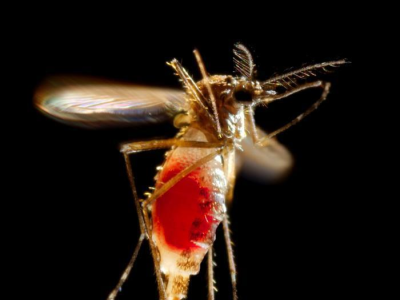Sep 5, 2007 (CIDRAP News) – The US Centers for Disease Control and Prevention (CDC) yesterday released a lengthy list of safety violations it found in an investigation of a biodefense laboratory at Texas A&M University, where research on dangerous pathogens was suspended 2 months ago after problems came to light.
On Jun 30 the CDC ordered the lab to stop all work on "select agents and toxins" while it investigated reports of lab workers infected with the category B bioterrorism agents Brucella and Coxiella burnetti. The new CDC report says the lab's suspension will continue until the safety problems are corrected.
News of the infected lab workers surfaced after the Sunshine Project, an Austin, Texas, nonprofit group that monitors biodefense research safety, learned of the incidents from documents it obtained through Freedom of Information Act requests. In February 2006 a lab worker was infected with Brucella while cleaning an aerosol chamber, but the school did not report the incident immediately to the CDC as required. Two months later, three other workers were exposed to C burnetti, which causes Q fever, but college administrators did not report the incident to the CDC.
The university previously acknowledged that it should have reported the Brucella incident sooner but said the incidents did not pose a threat outside the lab. University officials also said they believed they were required to report only confirmed worker illnesses, not all exposures.
In late July the CDC sent a team of 18 investigators to examine the lab, which is affiliated with the Foreign Animal and Zoonotic Disease Defense Center, a US Department of Homeland Security (DHS) "center of excellence" that focuses on the study of foot-and-mouth disease, avian influenza, and Rift Valley fever, according to the center's Web site.
A 21-page report on the CDC investigation was released to the Sunshine Project and the Dallas Morning News and posted yesterday on both organizations' Web sites. Among other findings, the CDC team reported that:
- Some work, including experiments with Brucella, had not been approved by the CDC's Division of Select Agents and Toxins (DSAT).
- Documentation of corrective actions taken after previous inspections was deficient.
- Biosafety manuals contained inadequate information on the risks posed by the agents or toxins under study or the research being performed on them.
- Individuals entered the labs without proper clearance and proper protective equipment.
- Personnel who worked with three Brucella organisms did not receive appropriate serologic testing.
- Inventory oversight for the select agents was inadequate; for example, three vials of a select agent used by one of the research groups were missing.
- An aerosol chamber used for animal studies opened directly into the research laboratory.
- Research animals were not disposed of properly.
- The lab's security plan was not based on a site-specific risk assessment and did not properly address procedures for moving select agents between buildings.
- In at least seven instances, unapproved personnel had access to select agents.
- Records were not available on those who were approved and trained to perform select-agent work.
- Logs of people who accessed select agent labs were not kept properly, and the university's list of lab workers did not match the names on file with DSAT.
- Protective clothing was worn outside the laboratory.
The university said in August that the lab worker who was infected with Brucella wasn't authorized to work with the agent and that the lab wasn't cleared to perform experiments with the organism, the Associated Press (AP) reported yesterday.
In a letter that accompanied the CDC report, Robbin Weyant, director of DSAT, told Texas A&M that the ban on work with select agents will remain until the university has addressed all of the issues identified during the probe. Investigators will return to the lab to ensure that problems have been corrected, Weyant wrote.
The university has already started to correct deficiencies raised by the report, Weyant wrote, pledging that the DSAT will continue to provide technical assistance.
Mike McKinney, chancellor of Texas A&M, told the Dallas Morning News yesterday that the report was clear about the actions the university needs to take. "We have to do a better job of documenting, of monitoring what we're doing. We can't always assume we're doing what we're supposed to do," he said.
It's unclear if the US Department of Health and Human Services (HHS) will penalize the university or press criminal charges for not reporting the lab worker's Brucella infection. News of any penalty, which could include fines or a suspension of funding, is expected in a separate report from the HHS inspector-general, the Morning News report said.
Details of the infractions at the Texas lab come on the heels of recent news of two other lab accidents involving dangerous pathogens. In early August, British authorities said that a lab leak was the probable cause of a foot-and-mouth disease outbreak at cattle farms southwest of London. In mid August, a student received medical treatment for possible exposure after an anthrax spill in a University of Mississippi lab.
Also in August, the US House Committee on Energy and Commerce announced plans for a hearing in early October on the risks associated with the nation's growing number of labs that handle dangerous microbial agents.
See also:
Jul 3 CIDRAP News story "CDC suspends work at Texas A&M biodefense lab"
National Center for Foreign Animal and Zoonotic Disease Defense site
http://fazd.tamu.edu/
Aug 14 CIDRAP News story "Student treated after anthrax spill in Mississippi lab"


















